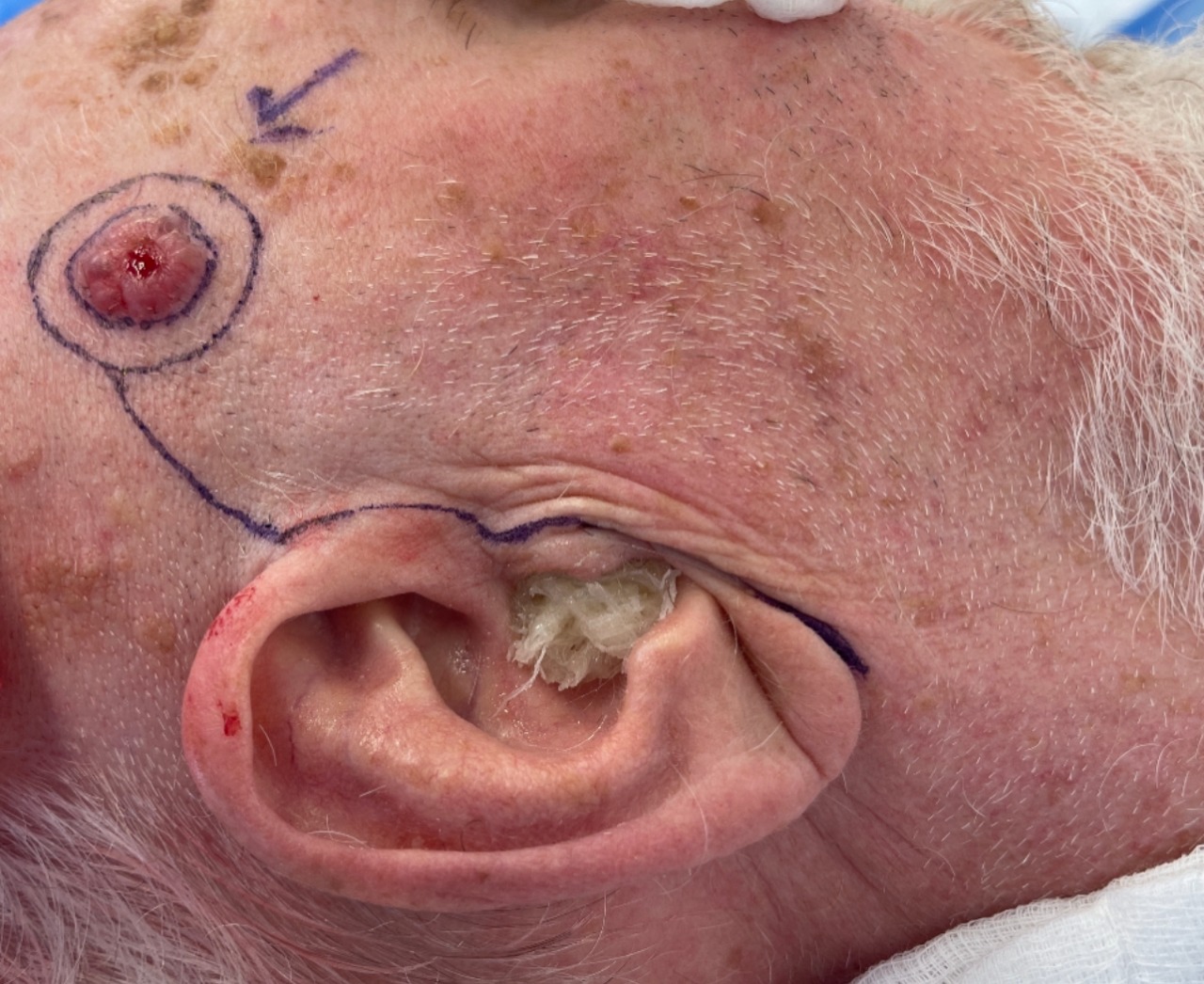Facial Skin Cancer & Reconstruction
Skin cancer can take the form of either common non-melanoma skin cancers, or melanomas, which are far rarer but also far more aggressive. Non-melanoma skin cancer is one of the most common of all cancers, with over 100,000 cases every year in the UK alone. Fortunately, it is also one of the least likely to spread to other areas of the body.
Types of skin cancer
There are two types of non-melanoma skin cancer, based on the type of cells where the cancer starts:
- Basal cell carcinoma ( commonly known as a 'rodent' ulcer ) – which starts at the bottom of the epidermis.
- Squamous cell carcinoma – which starts at the top of the epidermis.
Around 75% of skin cancers are basal cell ( the majority of which are found on the head and neck ), 20% are squamous cell and 5% are melanomas. 90% of basal cell carcinomas are completely cured, as are 70-90% of squamous cell carcinomas. Basal cell skin cancer only spreads in 1 in 200 people, and squamous cell skin cancer only spreads in one in 25. This is considerably less than the spread rate of most other cancers
Symptoms of skin cancer
Non-melanoma skin cancers can appear as firm lumps or flat scaly patches. They can appear red, with visible blood vessels ( the typical nodular basal cell carcinoma appears as a raised rolled pearly edges with telangiectasia - the visible blood vessels ) white or brown, like darkened skin. Lumps can show up anywhere on your body, but are most commonly found in areas that are exposed to the sun, such as the face or neck. Scaly patches often develop on the shoulders, chest or back.
Diagnosis of skin cancer
In many cases, skin cancer can be eliminated by visually examining the problem lump or patch of skin. If suspicious then your GP will refer you to a dermatologist or a maxillofacial surgeon for further treatment which will likely be in the form of a biopsy.
Skin cancer risk factors
Certain groups of people are generally more susceptible to skin cancer as a result of their genetic make-up. You are more likely to develop skin cancer if you have:
- A family history of the disease
- Pale skin that does not tan easily
- Red or blonde hair
- Unusually freckly skin
- Unusually freckly skin
The amount of sun you are exposed to is also a major risk factor, especially when combined with the genetic factors listed above. Both UVA and UVB rays, which are present in sunlight, as well as artificial sun beds and sunlamps, can cause damage to the DNA of skin cells, causing skin cancer. People in high risk groups should minimise their risk by dressing sensibly in the sun and using high factor sun block, and everyone should take care to limit their exposure and avoid sunburn.
Basal cell carcinoma excision with rhomboid flap reconstruction. Invisible at 3 months Post Op.




After

Before
Phone
07866807608 or 07956229992
The Harley Street Clinic
35 Weymouth Street
London
W1G 8BJ
London W1G 9QJ,
Clinics Hours :
Alternate Wednesdays 9am-1pm
Remote clinics : Monday - Thursday 6PM - 8pm
London Independent Hospital
1 beaumont square, Stepney, London, E1 4NL
Clinics Hours :
Alternate Fridays 9am - 2pm
Remote clinics : Monday - Wednesday 6PM - 8pm

